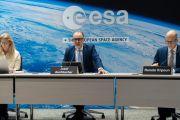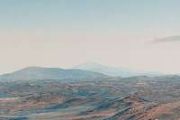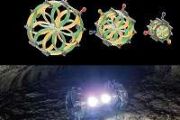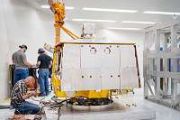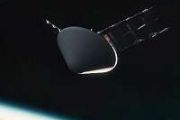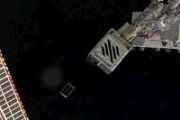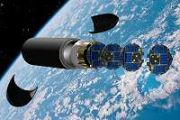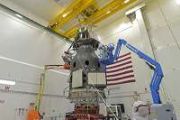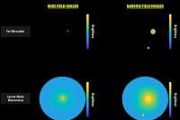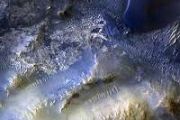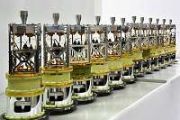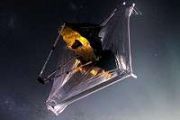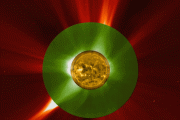
Copernical Team
Japanese company loses contact with Moon lander
 A Japanese company lost contact with its Moon lander Resilience during a daunting final descent, dealing a blow to its bid to make history two years after a prior mission ended in a crash.
Tokyo-based ispace had hoped to become only the third private firm - and the first outside the United States - to achieve a soft landing on the lunar surface.
Touchdown was scheduled for 4:17 am Japa
A Japanese company lost contact with its Moon lander Resilience during a daunting final descent, dealing a blow to its bid to make history two years after a prior mission ended in a crash.
Tokyo-based ispace had hoped to become only the third private firm - and the first outside the United States - to achieve a soft landing on the lunar surface.
Touchdown was scheduled for 4:17 am Japa In row with Trump, Musk says will end critical US spaceship program
 SpaceX chief Elon Musk said Thursday he would begin "decommissioning" his company's Dragon spacecraft - vital for ferrying NASA astronauts to and from the International Space Station - after President Donald Trump threatened to terminate his government contracts.
"In light of the President's statement about cancellation of my government contracts, @SpaceX will begin decommissioning its Dra
SpaceX chief Elon Musk said Thursday he would begin "decommissioning" his company's Dragon spacecraft - vital for ferrying NASA astronauts to and from the International Space Station - after President Donald Trump threatened to terminate his government contracts.
"In light of the President's statement about cancellation of my government contracts, @SpaceX will begin decommissioning its Dra Japanese company aborts Moon mission after losing contact with lander
 Japan's hopes of achieving its first soft landing on the Moon by a private company were dashed Friday when the mission was aborted over lost contact with the Resilience spacecraft during a daunting final descent.
Tokyo-based ispace had hoped to make history as only the third private firm - and the first outside the United States - to achieve a controlled touchdown on the lunar surface with
Japan's hopes of achieving its first soft landing on the Moon by a private company were dashed Friday when the mission was aborted over lost contact with the Resilience spacecraft during a daunting final descent.
Tokyo-based ispace had hoped to make history as only the third private firm - and the first outside the United States - to achieve a controlled touchdown on the lunar surface with Renowned Mars expert says Trump-Musk axis risks dooming mission
 Robert Zubrin quite literally wrote the book on why humanity should go to Mars - so why has the renowned aerospace engineer soured on Elon Musk, the billionaire entrepreneur leading the charge?
In an interview, the 73-year-old founder of the Mars Society delivered a blistering critique, accusing the world's richest person of undermining the mission through divisive politics and a bleak visi
Robert Zubrin quite literally wrote the book on why humanity should go to Mars - so why has the renowned aerospace engineer soured on Elon Musk, the billionaire entrepreneur leading the charge?
In an interview, the 73-year-old founder of the Mars Society delivered a blistering critique, accusing the world's richest person of undermining the mission through divisive politics and a bleak visi The promise and peril of a crewed Mars mission
 A crewed mission to Mars would rank among the most complex and costly undertakings in human history - and US President Donald Trump has vowed to make it a national priority.
That political momentum, coupled with SpaceX chief Elon Musk's zeal, has breathed new life into a cause long championed by Red Planet advocates - even as major obstacles remain, including Trump and Musk's latest feud.
A crewed mission to Mars would rank among the most complex and costly undertakings in human history - and US President Donald Trump has vowed to make it a national priority.
That political momentum, coupled with SpaceX chief Elon Musk's zeal, has breathed new life into a cause long championed by Red Planet advocates - even as major obstacles remain, including Trump and Musk's latest feud. NASA, ISRO research aboard fourth private astronaut mission to station
This request seems a bit unusual, so we need to confirm that you're human. Please press and hold the button until it turns completely green. Thank you for your cooperation!
Press and hold the button
If you believe this is an error, please contact our support team.
185.132.36.159 : 2bb2904e-37d2-42ca-9e3b-3a98998a
Private lunar lander from Japan falls silent while attempting a moon touchdown
This request seems a bit unusual, so we need to confirm that you're human. Please press and hold the button until it turns completely green. Thank you for your cooperation!
Press and hold the button
If you believe this is an error, please contact our support team.
185.132.36.159 : 07b9dc47-1d89-4a6c-aaba-cf3bd678
The Blue Danube Waltz sent into the stars

On 31 May, a live performance of The Blue Danube – often referred to as the ‘anthem of space’ – was transmitted by the European Space Agency (ESA) into the vastness of space. The event marked a double celebration: ESA’s 50th anniversary and the 200th birthday of
Earth from Space: Saharan dust plume
 Image:
A thick plume of sand and dust from the Sahara Desert is seen in these satellite images blowing from the west coast of Africa across the Atlantic Ocean.
Image:
A thick plume of sand and dust from the Sahara Desert is seen in these satellite images blowing from the west coast of Africa across the Atlantic Ocean. Private Japanese lunar lander heads toward a touchdown in the moon's far north
This request seems a bit unusual, so we need to confirm that you're human. Please press and hold the button until it turns completely green. Thank you for your cooperation!
Press and hold the button
If you believe this is an error, please contact our support team.
185.132.36.159 : 2005b29c-670d-4e80-9bcd-67621eb0

